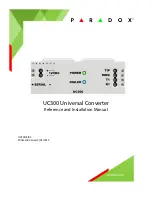
58
adjusting your driving behavior
10.4. braking distances
Braking distances serve to brake the decoder regardless of the data sent from
the control center information. This function is often used for stopping a train in
front of a red signal. LokSound detects a brake command, it will stop with the
programmed deceleration. After the forced stop the locomotive begins to move
away again and accelerates with the adjusted in CV 3 time.
Depending on the digital system there are different ways to influence the
decoder so that it stops.
10.4.1. DC braking mode
To activate the DC braking mode has overall bit 3 in CV 27 to be set. The sound
decoders is precisely then decelerate during active braking mode when it enters
from a digital section to a direct current portion, and the polarity of the rail
nenspannung NOT with the current travel direction of the deco DERS matches.
Then, the locomotive stops taking into account the braking time.
10.4.2. Märklin® braking section
The Märklin® modules 72441/72442 place substantially Toggle instead of the
digital signals, a DC voltage (DC) on the track. LokSound decoders detect this
voltage and advertising to continue as long as the recognition set by bit 3 and bit
4 in CV 27 (So: CV 27 = Value 24). The signal generated by these modules
looks the same as DC from conventional DC-transformers. The sound decoders
could misinterpret this and switch to the analogue mode instead of brake.
Would you like to control LokSound decoder with DCC signals, but still keep
your Märklin® brake sectors then you should switch off the DC analogue mode
by deleting bit 1 in CV 50th Then the LokSound will stop correctly.
10.4.3. Selectrix® diodes braking distance
sound decoders
recognize
also the
Selectrix®
Diode braking distance and stop correctly.
10.4.4. ABC braking mode
LokSound decoder 5 also support the ABC braking technique. Here, in a rail half
of a group of anti-parallel DIO is the soldered. By the voltage drop across the
diodes results in an asymmetrical DCC signal. Sound decoders can measure
this voltage difference between left and right half of the signal can stop the
decoder on request. To apply the ABC technique, you need nonferrous ben
appropriate decoder, an appropriate brake modules. The ABC technique can be
used with boosters which offer egg NEN exactly balanced output. All ESU and
Lenz® stations and boosters guarantee a balanced output. The use of other
booster is not recommended for the ABC technique.
• If the LokSound decoder stop when the track signal is on the right side than on
the left, so put 27 bit 2 in CV.
• If the LokSound decoder stop when the track signal is on the left side than on
the right side, so you put 27 Bit 1 in CV.
• To be held back, no matter what track half the diodes zen sit-, please contact
CV 27 bit 2 and bit 1 (CV 27 = 3).
10.4.4.1 ABC slow travel section
The decoder also recognize the possible union slow speed sections with the
Lenz BM2 module. The speed desired overall in the low-speed section can be
set in CV 123rd A value of 255 corresponds here to full throttle, the value 0
would stop the locomotive.
10.4.4.2. NBC detection threshold
In some cases of operation, it may happen that the locomotive sound decoder does
not recognize the ABC braking distance. This may at
Summary of Contents for 58315
Page 104: ...104 notes...
Page 105: ...105 notes...
Page 109: ...109 notes...
Page 110: ...110 notes...
Page 111: ...111...
















































